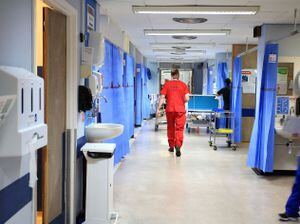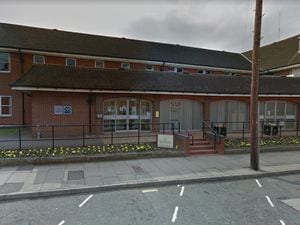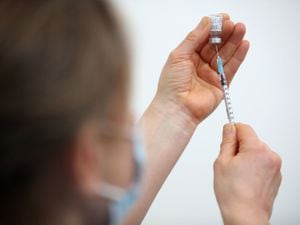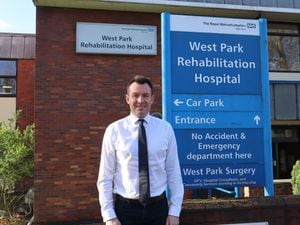One in four A&E patients not seen in target time as emergency visits reach record levels
One in four patients attending A&E in the region were not seen inside the target time of four hours last month, new figures show.

A total of 102,700 patients attended emergency departments in the Black Country and Staffordshire in March, in what was the busiest March in the NHS's history.
Of these 26,440 or 25.7 per cent of people were not admitted, transferred or discharged within four hours of their arrival, giving an overall success rate of 74.3 per cent.
This was well below the NHS target of treating, transferring or discharging 95 per cent of A&E patients within four hours, but was above the national average of 71.6 per cent.
This was the lowest percentage in records going back to November 2010. Meanwhile the target has not been hit since 2015.
NHS England said emergency departments were under significant pressure, with 2.17 million people attending A&E in March, a rise of nearly 20 per cent month-to-month and the highest March ever.
At New Cross Hospital, 16,605 out of 21,049 patients were treated in the target time, meaning an A&E performance percentage of 78.9 per cent.
At Russells Hall Hospital in Dudley, there were 16,186 patients overall with 12,413 of these seen within four hours, a total of 76.7 per cent.
The Sandwell and West Birmingham NHS Trust, which runs Sandwell General Hospital and City Hospital in Birmingham, had more patients visit its A&E departments than any other trust in the region.
Of its 31,216 patients overall, 24,714 or 75.7 per cent were seen within four hours.
Walsall Manor Hospital had 12,170 patients last month with 9,228 – or 75.8 per cent – being seen within four hours.
And at the University Hospitals of North Midlands NHS Trust, which runs Stafford's County Hospital and the Royal Stoke University Hospital, 22,079 patients visited A&E. A total of 13,300, or 60.2 per cent, were seen within four hours.
Chris Hopson, chief executive of NHS Providers, said there are 20,000 medically-fit patients blocking beds due to not being able to be discharged due to pressures on social care.
In a statement, he added: "Emergency care is under particular strain, with record levels of demand: record A&E attendances for the month of March and record ambulance call volumes from December to March.
"We're also seeing very concerning increases in ambulance response times and in the number of people waiting more than 12 hours in A&E before admission.
"Trust leaders are deeply aware of the obvious risks to patient safety here and are doing all they can to manage these risks.
"Trusts are also grappling with the ongoing impact of Covid-19. That's meant more patients with Covid-19 in hospital beds, more staff off work with Covid-19, and more delayed discharges than anyone was expecting or had predicted."
It comes as ambulance response times and A&E performance in England dropped to their lowest levels on record while the backlog of patients waiting for care has continued to grow.
The number of people in England waiting to start routine hospital treatment rose to a new record of 6.2 million at the end of February, up from 6.1 million in January and the highest number since records began in August 2007.
But the figures also show that while the overall waiting list has continued to grow, the number of people waiting more than a year and two years have both fallen.
Meanwhile, the average response time last month for ambulances in England dealing with the most urgent incidents – defined as calls from people with life-threatening illnesses or injuries – was nine minutes and 35 seconds. This is up from eight minutes and 51 seconds in February and is the longest average since current records began in August 2017.





